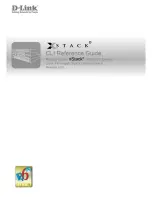
20 Gear Drive, Plymouth Ind. Park, Terryville, CT 06786
Tel: (860) 585-1254 Fax: (860) 584-1973 http://www.amci.com
Installing the ANS1
4
39
Module Installation (continued)
Module Mounting (continued)
Installing IC-5 Connectors
IC-5 connectors must be used when more than
one module is installed as an interconnected
stack. The ANS1 uses two IC-5 connectors. Fig-
ure 4.2 shows how to install the IC-5 connectors
in the DIN rail.
1) EN 05 022 - 35 x 7.5 DIN rail
must be used. The IC-5 connec-
tors are not properly supported in
EN 05 022 - 35 x 15 DIN rail
2) Note the orientation of the IC-5
connectors when installing them.
The module key goes towards
the bottom of the DIN rail.
Mounting the AnyNET-I/O Module
Mounting an AnyNET-I/O module is a very simple process thanks to the design of the enclosure.
1) Partially engage the connector into the enclosure.
2) Engage the top clip in the enclosure with the top of the DIN rail and rotate the module down until the
metal bracket snaps on to the DIN Rail.
Once all of your modules are installed, it is strongly suggested to use the end caps from Phoenix Contact with
the part number of 271 37 80 to secure the modules on the DIN Rail. These end caps prevent the module
from sliding along the DIN rail if it is subjected to shock or vibration during machine operation.
Stack Addressing
Each module is a stack needs to be given an address
before the system will operate correctly. The address is
set with the five position DIP switch on the front of the
module.
1) The module with the network interface
for the stack must have all of its DIP
switches off. (This is called address 0.)
This is the only module in the stack that
can have a direct network connection.
2) Only a single switch should be in the
“ON” position when setting the address.
3) If a module has a network interface, this
interface is disabled if the module has a
non-zero address. This allows two mod-
ules with network interfaces to work in a
single stack.
Figure 4.3 is a close up of three modules in an AnyNET-I/O Stack. The module on the left is an unit with a
network interface, and has an address of zero (All DIP switches off.) This module has the active network
interface and connects the stack to the network. Reading left to right, the remaining modules have addresses
of one and two respectively. These modules can be any type of AnyNET-I/O modules. If they have network
interfaces, these interfaces are disabled.
Figure 4.2 IC-5 Connector Installation
Figure 4.3 Addressing Example
A
D
D
R
ES
S
AD
D
R
ES
S
A
D
D
R
ESS
Address
=0
Address
=1
Address
=2
Summary of Contents for ANS1 ANYNET-I/O
Page 1: ...MICRO CONTROLS INC ADVANCED U s e r M anual Manual 940 0A090...
Page 6: ...Table of Contents ADVANCED MICRO CONTROLS INC 6 Notes...
Page 26: ...Limit Switch Functionality ADVANCED MICRO CONTROLS INC 2 26 Notes...
Page 36: ...Additional Functionality ADVANCED MICRO CONTROLS INC 3 36 Notes...
Page 90: ...LEADERS IN ADVANCED CONTROL PRODUCTS ADVANCED MICRO CONTROLS INC...
















































